Imagine your kayak as your loyal companion on the water, a dependable ally navigating through serene lakes and thrilling rapids alike. Now, imagine it’s your job to return the favor, ensuring your kayak’s well-being so it can keep serving you on countless adventures. I’m here to help you with that task.
Choosing The Right Material For Your Kayak
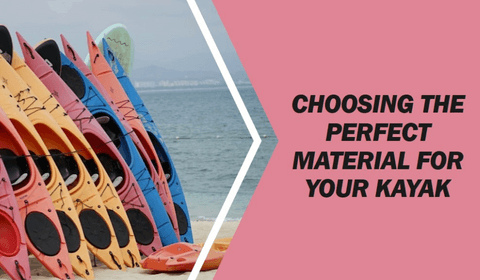
Different kayak materials—from polyethylene and fiberglass to kevlar and wood—require different approaches to care.
Polyethylene kayaks, the focus of this article, are popular for their durability and affordability. But, don’t worry too much about this. I’ll also drop occasional mentions of care tips for other materials, so no kayak feels left out.
How To Care For Polyethylene Kayaks
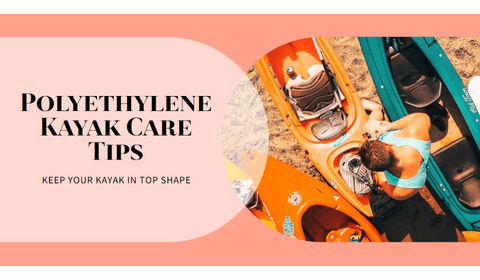
Weekend Warrior kayaks are a prime example when we talk about polyethylene models. Their roto-moulded craftsmanship boasts high-grade linear polyethylene that’s designed with minimal maintenance in mind. Yet, basic care can’t be neglected if you aim to keep your kayak in near-new condition for years to come.
Inspect Your Kayak For Damage

Your kayak demands regular check-ups—much like a car—to ensure everything is functioning correctly. You’re going to have to inspect everything from top to bottom, including:
- Loose Hardware
- Holes
- Tight Bulkhead Seals
- Dependable Rigging
How To Store Your Kayak Properly
But maintenance isn’t the whole story; how you store your kayak can make a huge difference in its longevity and performance.
You’ll learn the best practices for storing your kayak indoors or outdoors, and how to protect it from the elements and pests.
The Importance of Proper Kayak Storage
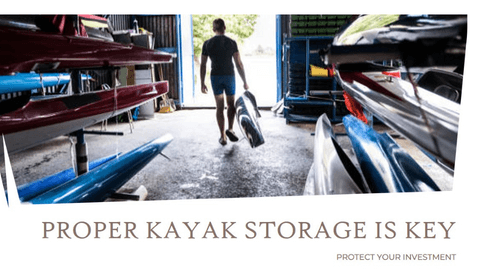
You’re going to find out about the significant role storage plays in maintaining the integrity of your kayak. It’s not just about keeping your kayak out of the way; it’s about preserving its condition for the long haul.
Choose a storage space that is cool and dry. Sweltering attics or damp basements can do more harm than good.
Direct sunlight is particularly troublesome as it can fade colors and degrade materials over time. That’s going to include polyethylene kayaks, which are particularly vulnerable to UV damage.
How To Store Your Kayak Outdoors
If the great outdoors is your only option for storage, don’t worry too much about it. I’ve got some tips to help you.
- Opt for a shaded area, or even better, create shade with a purpose-built structure or cover. The key here is to block those harmful UV rays.
- You’ll also want to cover the cockpit—not only to protect it from the sun and rain but also from curious animals looking for a new home.
How To Use Storage Devices For Your Kayak
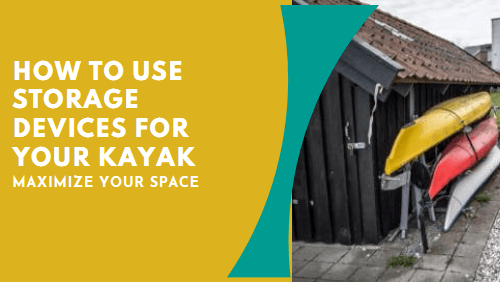
How about storage devices like racks or cradles? Use them. They’re a worthwhile investment, keeping your kayak off the ground and ensuring it retains its shape.
Plus, when covered with a weather-resistant tarp for prolonged outdoor storage, make sure the tarp doesn’t directly touch the kayak.
Air circulation is crucial for avoiding a petri dish situation where mold finds its paradise.
How To Clean Your Kayak Regularly
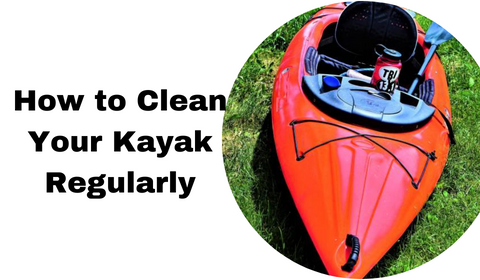
Up next, you’re going to delve into the nitty-gritty of kayak hygiene. Cleaning your kayak may seem like a chore, but it’s a fundamental aspect of care.
A clean kayak isn’t just about aesthetics—it can prevent saltwater corrosion, algae buildup, and even give you a smoother, faster ride on the water.
I’m here to walk you through cleaning 101, making it as painless as possible.
The Benefits of Keeping Your Kayak Clean
I’m going to let you in on a little secret: a key to enjoying your kayak for years to come is keeping it clean.
It might seem like a chore, but trust me, it’s more about loving care than mindless scrubbing.
Secret 1: Rinsing Your Kayak After Each Use
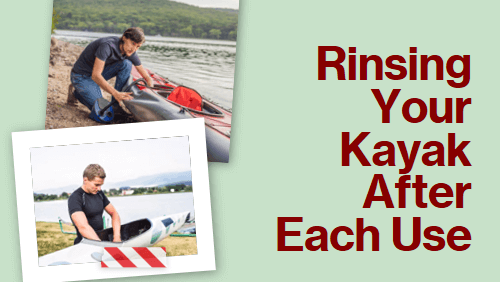
You know what they say about prevention: it’s worth a pound of cure. That’s the strategy I like to leverage when it comes to my kayak.
After each paddle, I make a point to rinse it down – especially if I’ve been in saltwater or weeding through algae-infested areas.If you do the same, you’re going to find out about the amazing difference it makes.
Secret 2: Cleaning Areas That Trap Water or Debris

Here’s something you might not think about: pay special attention to areas that can trap water or debris, like:
- The cockpit rim
- The hatch interiors
- The rod holders.
It’s easy for stuff to accumulate here, and that’s not what you want.
Secret 3: Using Soap, Water, and a Sponge
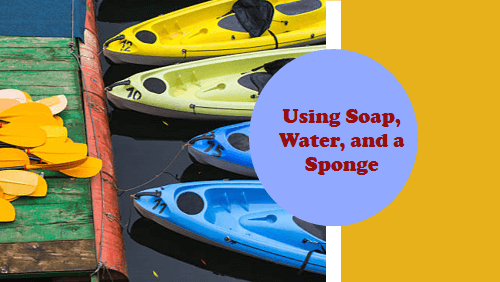
Now, for a bit of elbow grease — grab some light soap and water and a non-abrasive sponge. Avoid anything too gritty or else you might hurt your kayak more than help it.
For those of you with plastic kayaks, consider using a protective spray after rinsing it off. And if you’re the proud owner of a shiny fiberglass model, a good coat of quality wax now and then will keep it sleek and swift in the water.
Secret 4: Fixing Hull Deformities with Sunlight
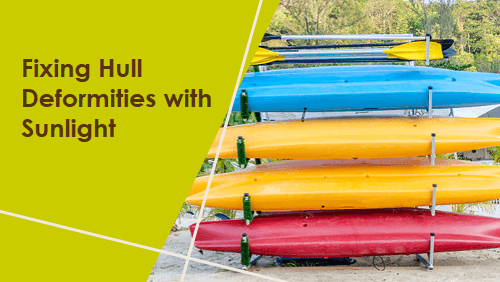
Every now and again, polyethylene pals, you might notice some hull deformities – kind of like how I need a chiropractor after sitting at my desk too long.
Extended exposure to the sun and less-than-ideal storage conditions can lead to a misshapen kayak. Don’t worry too much about this; it’s relatively common and usually not structurally concerning.
If you spot these changes, a little time in the sun can work wonders. The warmth softens the plastic, letting you nudge it back to its original form. It’s like giving your kayak a nice, relaxing day at the spa, except it’s your backyard, and you’re doing the massaging.
Beyond the Basics: Upgrading and Repairing Your Kayak
Now, after you’ve invested time in maintaining the physical cleanliness and storage of your kayak, consider taking your kayak’s care a step further.
Upgrading Your Kayak For A Better Paddling Experience
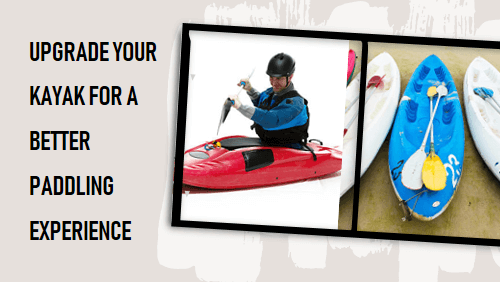
Upgrades might not always be on your mind, but they can be game-changers. Imagine your kayak not just maintained, but enhanced.
Thinking about getting new rod holders? Maybe you’ve been eyeing those plush, ergonomic seats for your long paddling adventures. Or perhaps, intrigue is steering you towards the Versa Paddle or Gamut Paddle Holder for a different paddling experience.
If moving your kayak has been a hassle, upgrading to a solid kayak cart could save your back and your time.
Repairing Your Kayak From Scratches And Dents

But let’s not forget the not-so-fun part: repairs. Don’t ignore that scratch or the little dent from your last adventure.
I recommend getting your hands on a polyethylene repair kit. With the right tools, such as a plastic welder or even a common household hairdryer, you can buff out those biffs and buffs.
Keeping Your Kayak In Top Shape With Regular Check-Ups
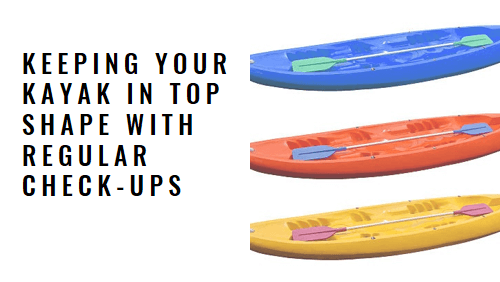
One final word of advice: just don’t overthink it. Your kayak is sturdy and meant for the water’s challenges.
Regular check-ups and tune-ups are vital, but perfection isn’t the goal – it’s about ensuring your safety and enjoying the water. Weekend Warrior kayaks, with their six years of UV stabilizer, remind us of the resilience built into these vessels, but they also underscore the need for mindful care.

Dear Martins,
Thank you for this comprehensive guide on maintaining and caring for kayaks. Your analogy of the kayak as a loyal companion sets a delightful tone for the entire piece. The detailed breakdown into sections like choosing the right material, storage, cleaning and even upgrading and repairing provides a full breakdown for kayak enthusiasts like me.
The incorporation of secrets for keeping a kayak clean, such as rinsing after each use and paying attention to areas that trap water or debris, provides practical insights. The step-by-step guide on using soap, water, and a sponge for cleaning, along with the tips on fixing hull deformities with sunlight is really helpful for me to maintain my kayak. I definitely will have to try it out myself.
Your concluding words, emphasizing regular check-ups without overthinking, provide reassurance that the process is about ensuring safety and enjoying the water. It is evident that your passion for kayaking and caring for these water vessels shines through in your writing.
How does direct sunlight impact the longevity of polyethylene kayaks and what are the recommended storage practices to protect them from UV damage?
Happy paddling!
Dear Starlight,
Thank you for your thoughtful feedback on my article! I’m thrilled to hear that you found the guide comprehensive and practical.
As fellow kayak enthusiast, it warms my heart to know that my words resonate with others who share the same passion.
Now, let’s dive into your excellent question about direct sunlight and polyethylene kayaks.
Impact of Direct Sunlight on Polyethylene Kayaks: Polyethylene, being a durable and popular kayak material, offers excellent resistance to impact and UV radiation. However, prolonged exposure to sunlight can gradually degrade its surface, causing it to lose its shine and potentially weaken its structural integrity. Think of it as the kayak’s equivalent of sunburn!
Here’s what you need to know:
Brittleness: Extended exposure to sunlight can cause plastic kayaks to become brittle over time. Imagine your kayak soaking up too much sun, like a sunbathing lizard 🙂 To prevent this, we need to be mindful of where we park our beloved vessels.
Fading: The vibrant colors of a polyethylene kayak can fade when exposed to relentless UV rays. While a sun-kissed glow is lovely on our skin, it’s less desirable for our kayaks.
Recommended Storage Practices to Protect Your Polyethylene Kayak: To ensure your kayak enjoys a long and healthy life, consider the following storage tips:
Shade Is Your Friend: Whenever possible, store your kayak in a shaded area. Find a cozy spot away from the blazing sun. If shade is scarce, consider using a weather-resistant tarp that covers the entire hull. Think of it as a stylish sun hat for your kayak!
Avoid Heat Sources: Keep your boat away from direct heat sources. No cozy fireside chats for your kayak, please! Extreme heat can lead to hull deformation. So, skip the sauna sessions and opt for a cooler storage spot 🙂
Rain and Snow Protection: Ensure rain and snow can’t collect in or on your kayak. If you’re suspending a tarp above the boat, make sure it won’t fill up and press down on the hull. We want our kayaks to stay dry and mold-free!
Remember, a well-cared-for kayak is a happy kayak. Regular check-ups, a little TLC, and smart storage practices will keep your watercraft ready for countless paddling adventures.
Happy paddling, and may your kayak glide through the waves with grace and joy!
Cheers!
Martins